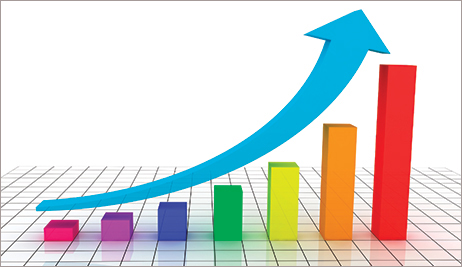The U.S. economy grew at an annual rate of 2.3 percent during the first three months of 2018, according to The Washington Post. The growth was higher than analysts' predictions of a 2 percent annual growth rate and reflected an expected decrease from the 2.9 percent growth rate during the fourth quarter of 2017.
The report was the first since President Trump's tax cut took effect Jan. 1. The tax overhaul reduced corporate taxes aimed at boosting investment and jobs and has produced mixed results.
Although the Commerce Department report showed a significant contribution from business investment, which rose more than 6 percent, a recent Census Bureau report showed that nondefense capital goods orders, excluding aircraft, fell 0.1 percent in March and preliminary results from earlier months had been revised lower. Additionally, consumer spending fell from a 4 percent gain during the final quarter of 2017 to a 1.1 percent gain during the first quarter of 2018, largely because of struggling auto sales.
Economist Jim O'Sullivan of High-Frequency Economics says gains are likely to be stronger in the second quarter as tax refunds reach taxpayers' bank accounts and the effects of higher government spending are realized; O'Sullivan expects a second-quarter rebound to an annual rate of 3.7 percent.
The Federal Reserve raised short-term interest rates in March for the sixth time since 2015 and predicted the economy would grow this year at an annual rate of 2.7 percent, which is up from its December 2017 forecast of 2.5 percent.





